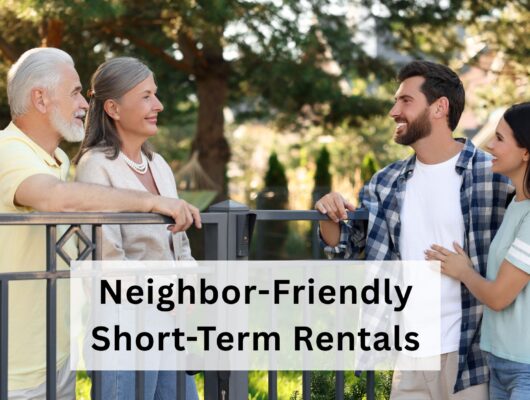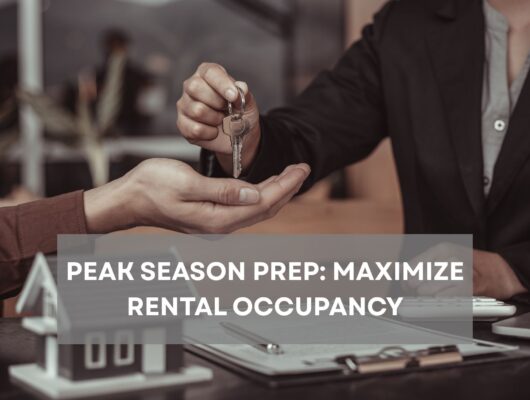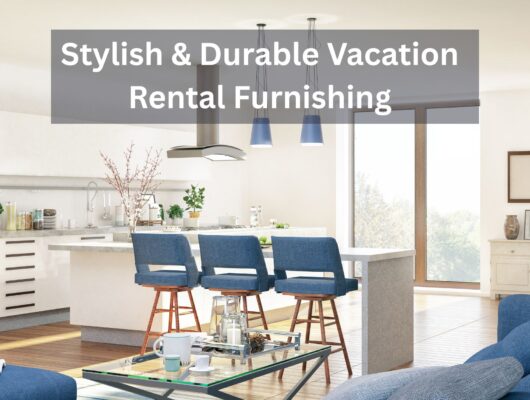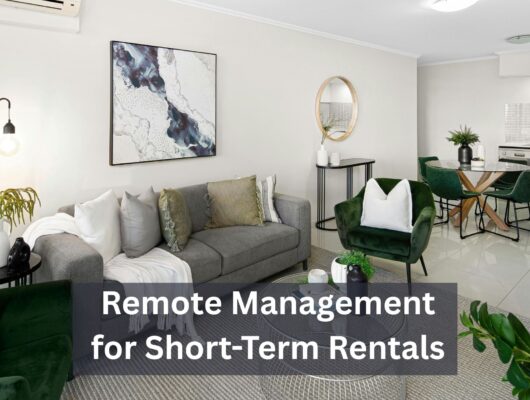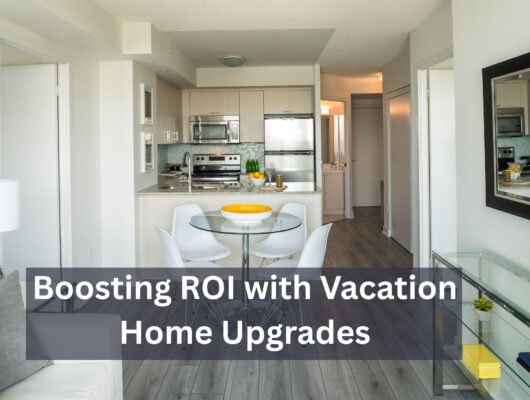How to Evaluate the Long-Term Value of a Short-Term Rental
While short-term rentals can be lucrative, not every property is a good fit for Airbnb or vacation rental investments. To determine whether a property is worth keeping as a short-term rental, investors need to track key performance metrics that assess its long-term financial health.
In this guide, we’ll break down three essential metrics for evaluating the sustainability and profitability of a short-term rental property.
1. Occupancy Rate and ADR (Average Daily Rate)
Why These Metrics Matter
A property’s occupancy rate and average daily rate (ADR) are two fundamental indicators of rental performance and revenue potential. These numbers determine whether your property is attracting enough bookings at competitive pricing.
Understanding Occupancy Rate
- Definition: The percentage of days in a given period that your property is booked.
- Industry Benchmark:
- A high occupancy rate (above 70%) suggests strong demand but may indicate that pricing is too low.
- A low occupancy rate (below 50%) may signal pricing issues or lack of market demand.
Understanding ADR (Average Daily Rate)
- Definition: The average revenue earned per booked night.
- Optimizing ADR:
- If ADR is too low, you may be underpricing your property.
- If ADR is too high with low occupancy, guests may find it overpriced compared to competitors.
How to Balance Occupancy and ADR
- Use dynamic pricing tools (e.g., PriceLabs, Beyond Pricing, Airbnb Smart Pricing) to adjust rates based on market demand.
- Optimize seasonal pricing strategies to maximize revenue during peak demand.
- Monitor guest feedback to ensure pricing aligns with perceived value.
📌 Pro Tip: High occupancy with low ADR can be just as problematic as high ADR with low occupancy. The key is balancing both for optimal revenue generation.
2. Seasonal Revenue Patterns
Why Seasonality Matters
Understanding seasonal revenue fluctuations allows property owners to adjust pricing, manage cash flow, and optimize marketing efforts.
Peak Season vs. Off-Season Performance
- Peak Season:
- Typically includes holidays, summer months, and major local events.
- Best strategy: Increase rates while ensuring the property is fully booked.
- Off-Season:
- Often results in lower demand and reduced occupancy.
- Best strategy: Offer discounts, extended stay deals, or added perks to attract guests.
How to Analyze Seasonal Trends
- Use historical booking data to track revenue spikes and dips.
- Research competitor pricing to determine when rates should be increased or lowered.
- Advertise seasonal experiences to maintain demand year-round.
Example of Seasonal Adjustments
| Season | Strategy |
| Summer (Peak) | Highlight outdoor amenities (BBQ, pool, patio) & increase rates |
| Winter (Low) | Offer discounted long-term stays, showcase fireplaces & hot tubs |
| Holiday Periods | Set premium pricing for Christmas, New Year’s, and long weekends |
| Local Event Dates | Align pricing with festivals, sports events, or concerts |
📌 Pro Tip: Plan for cash flow gaps in off-seasons by adjusting expenses or offering discounts to attract more bookings.
3. Maintenance Costs and ROI (Return on Investment)
Why Maintenance Costs Impact Long-Term Value
Short-term rentals experience higher wear and tear than traditional rentals due to frequent guest turnover. Proper maintenance is crucial for guest satisfaction, positive reviews, and long-term profitability.
Tracking Maintenance Expenses
- Regular Upkeep: Cleaning, landscaping, and minor repairs.
- Major Repairs: Appliance replacement, plumbing fixes, roof repairs.
- Furnishing & Decor Updates: Replacing outdated furniture or worn-out items.
Calculating ROI on Property Upgrades
- Formula for ROI on Upgrades: ROI=(Additional Revenue from Upgrade−Cost of UpgradeCost of Upgrade)×100\text{ROI} = \left(\frac{\text{Additional Revenue from Upgrade} – \text{Cost of Upgrade}}{\text{Cost of Upgrade}}\right) \times 100ROI=(Cost of UpgradeAdditional Revenue from Upgrade−Cost of Upgrade)×100
- Examples of High-ROI Investments:
- Adding a hot tub ($5,000 investment) → Increased ADR by $50/night = ROI within 6 months.
- Upgrading bedding and furniture → Higher guest ratings, increased bookings.
Preventative Maintenance Strategies
- Conduct seasonal inspections (HVAC in winter, AC in summer).
- Use durable, easy-to-clean furniture and flooring.
- Invest in smart home tech (keyless locks, noise monitors) to reduce operational headaches.
📌 Pro Tip: A well-maintained property commands higher rates and repeat guests, directly increasing profitability.
Final Thoughts: Tracking the Right Metrics for a Sustainable Short-Term Rental Business
✔️ Monitor occupancy rate and ADR to ensure a healthy balance between bookings and revenue.
✔️ Understand seasonal revenue fluctuations to optimize pricing and marketing strategies.
✔️ Track maintenance costs and ROI to maintain property appeal while maximizing profitability.
Not every home is a good fit for short-term rental management, but by analyzing these key performance indicators, investors can make informed decisions and optimize their rental strategy for long-term success.
📌 Thinking about investing in short-term rentals? Use these metrics to evaluate your property’s potential today
FAQs About Evaluating Short-Term Rental Performance
1. What is a good occupancy rate for a short-term rental?
A 70-85% occupancy rate is ideal for most short-term rentals. Anything below 50% may indicate pricing or demand issues, while an over 90% occupancy rate could mean you are underpricing your property.
2. How do I calculate if my Airbnb is profitable?
Track total revenue, expenses (cleaning, maintenance, utilities, property management fees), and seasonal trends to determine net income. Use the ROI formula to assess the property’s long-term value.
3. What’s the difference between ADR and RevPAR?
- ADR (Average Daily Rate): The average income per booked night.
- RevPAR (Revenue per Available Room): The total revenue divided by all available nights, including unbooked dates.
4. How often should I update my short-term rental’s pricing?
- Adjust weekly or bi-weekly using market trends and competitor analysis.
- Use dynamic pricing tools to automate seasonal price changes.
5. What upgrades offer the best ROI for vacation rentals?
- Smart home technology (keyless entry, noise monitors).
- High-quality bedding and mattresses for guest comfort.
- Hot tubs, fire pits, or BBQ areas to increase ADR.
- Professional photography and listing optimization to enhance bookings.
